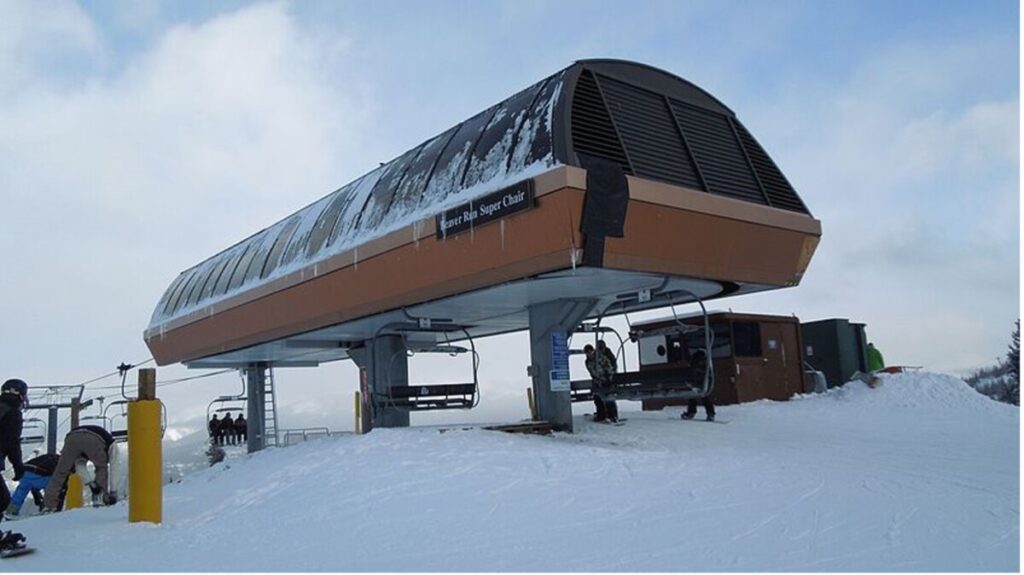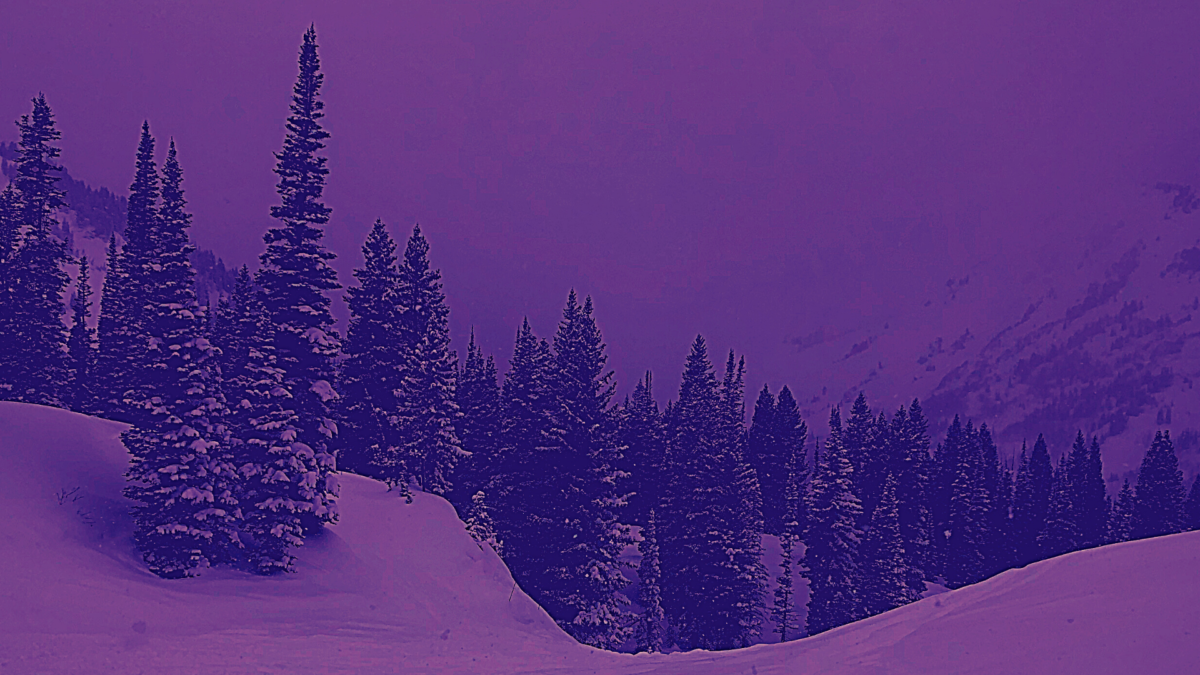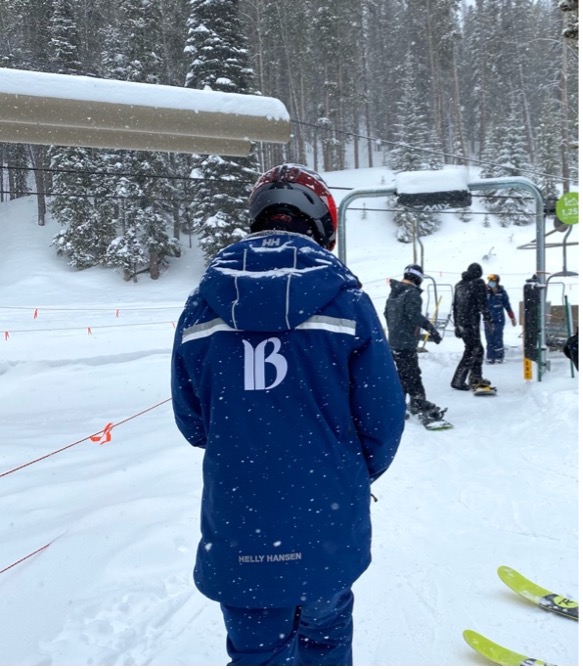Foreign Labor at Breckenridge, Colorado, Ski Resort
Ben Emery
In large, when anyone thinks of a quintessential ski bum, there is a certain person that comes to mind. Most likely they are male, in their 20s, wearing a beany hat and sipping a beer while sitting on the back of their Subaru. However, the truth behind the complexities of finding labor in ski towns shows how diverse these labor groups really are, and how large companies use this idealization of a ski bum life to attract young people into the mountains, but most of them leave after a season, when they realize just how exploitative many of these jobs are.
Last year I spent almost 5 months living and working at Breckenridge Ski Resort in Colorado, and that experience is what started my interest into researching how this system of labor formed in Breckenridge. The real story of Breckenridge starts in 1840, when it was first settled as a mining town. It lived as a mining town for almost 100 years, until World War Two, when it began to die out, declining to only a town of only 296 people in 1950—because the resources had run out, and there was no work to be had. Ten years later Breckenridge Ski Resort was opened, and 12 years after that the Eisenhower Tunnel was opened, making it one of the closest ski resorts to Denver. However, our story begins in 1996, when Vail Resorts bought Breckenridge and Keystone, rounding out its portfolio to 5 ski resorts, and beginning its play at becoming the titan of ski industry that it is today.
The Origin of Breckenridge’s Corporate Governance
It is Vail Resort’s drive for dominance that provides our first clue into how the ski industry became full of low wage jobs. When Vail Resorts bought Breckenridge, they paid almost 310$ million dollars in 1996, or 567.3$ million dollars in today’s currency. This was followed by heavy investment from Vail in Breckenridge—over $30 million dollars in the two years that followed. Due to this high level of business investment, Vail Resorts was financially pressured to make Breckenridge Ski Resort an extremely profitable business, so that they could pay off the heavy debt then took on when they purchased them. The finances had to line up for them to become the titan of ski industry that they wanted to be, and the simple truth was that labor is expensive, so they had to find a large group of people who would be willing to work for minimum wage so that they can be on the mountain. Two groups stood out, young people looking for an experience for a year, and Latino immigrants.
The Essential Role of International Labor
According to a 2008 Colorado College Study done on the state of the Rockies, between 1996 and 2005 the number of immigrant workers in the Rockies grew almost 300 percent, far outpacing the growth in the same category nationwide. This substantial influx of foreign workers continued through the 2000s and 2010s, until the cancelation of the J1 visa program in June of 2020 by the Trump administration, with the growing Coronavirus pandemic used as their justification. The J1 visa program was designed for seasonal workers,. The visa program allowed ski resorts to have workers come for the ski season and then return to their home country for the summer. However, when there was a ban put on the J1 program at the start of the Coronavirus pandemic, it left ski resorts with massive labor shortages. That caused resorts to be much less efficient. The labor shortage, combined with the increased number of passes sold, created the massive lift lines that were so common to see in the 2020-2021 season. The reliance on these foreign workers has generated much pushback from critics of Vail Resorts. Those same critics argue that when your wages are so low that you cannot rely on local workers for labor and need to import foreign workers for a few months of the year, you should raise your wages. While this opinion is valid, it appears as if it is rooted in anti-immigrant sentiments, not the labor economics of ski resorts.
The counterpoint to this argument against immigrant labor being used in ski resorts, is that the labor market is a free market, and the wages paid reflect that—where the demand for labor is being met legally then you cannot argue against the wages. The workers are generally being paid minimum wage, which is technically the level of income that the government deems necessary for survival. Additionally, Breckenridge does provide many other forms of compensation to these workers. They house many of their workers in subsidized employee housing, and those foreign workers are given priority access to that housing, as well as a free ski pass, discounted meals, and discounts on ski gear.

The Classic Ski Bum
It is these perks that attract our second group of laborers, the classic ski bums looking for a year off school, or just a different experience. This group is drawn to the mountains by the classic ski bum marketing, the images that resorts put out to try and sell a lifestyle of skiing every day and partying every weekend. A quick trip to Breckenridge’s website will show you all the imagery that they use under their “Working at Breckenridge” tab. It is skiers and snowboarders doing turns in perfect conditions, with tabs showing off all the discounts that you receive and trying to sell you on the lifestyle that is unrealistic. That is not to say that the ski bum life isn’t fun. My season working at Breckenridge was one of the most fun few months I’ve experienced, but a few photos of sleep-deprived workers setting up lift lines at 6am before sunrise would show the second half of that experience. This targeted marketing is how the resort recruits young workers. But the harsh realities of a job like the ones that are available means that most workers only last a season, due to low wage growth, and the cost of living in Breckenridge. Many of the older workers, who have lived and worked in Breckenridge, live 30-60 minutes away in Silverthorne and Dillon. Living and working in Breckenridge is not financially possible, unless you live in employee housing, and Breckenridge cannot provide employee housing to all employees.
The Price of Survival
This leads into one of the reasons that ski town labor has been such a controversial topic in recent years. That would be the price of living in these ski towns. The basic truth is that it costs money to get anything and everything up into the mountains, so all your items cost more. Combine that with the people buying second homes, and tourists that drive up the price of most other goods and services. It becomes virtually impossible to live on a minimum wage job, like any of the ones offered at a ski resort. In fact, a report done by the National Low Income Housing Coalition found that to afford a Zero-Bedroom rental in Summit County, a minimum wage worker must work an average of 75 hours a week. If you are to take lift operators at Breckenridge, who work an average of 10 hours a day, 4-5 days a week, then it quickly becomes apparent that two jobs are mandatory for anyone who cannot get subsidized housing. Additionally, anyone working two jobs is not going to have time to live the ski bum lifestyle that Breckenridge and many other resorts market the experience as. A self-sufficiency standard study done by the University of Washington listed the average monthly cost of housing in 2018 in Summit County to be over a thousand dollars for one adult. When you factor in the size of Summit County, to live in close enough proximity to the mountain to work there, you’re looking at an even higher cost of rent. Even at the average cost of housing in Summit County, an employee making $13 per hour, working 40 hours a week, would make $2,080 per month. This means that workers are using half of their monthly income only on rent, or even more if they choose to live a reasonable distance from the ski hill. As compensation for the extremely high cost of living in any mountain town, most other jobs that typically would be paid around minimum wage in a city, pay a small amount above minimum wage. However, Breckenridge still draws in their crowd with promise of cheap employee housing and discounted ski deals.
A New Approach
These factors bring up one major question: What is forcing Vail Resorts as a whole, but also specifically Breckenridge, to keep labor rates so low? Most other businesses in Breckenridge pay more than the on-mountain jobs, so why does Breckenridge keep its wages as low as possible? Well interestingly, there has been a recent development in this debate. In their second quarter earnings statement, Vail Resorts announced that because of recent events, and the difficulties that they have had getting enough seasonal workers, they are increasing their minimum wage across North America to $20 per hour for next year—an increase of around 30%. This marks a monumental pivot point in all the marketing that Vail Resorts has sent out for years. Earlier this year they fought with Park City’s ski patrol union for months over $15 an hour—for the most skilled workers on the mountain. So, this drastic change in labor policy surprised most of the ski community and was a stark change in everything that Vail Resorts has done regarding their employees for the last 20 years. What I believe pushed them to this decision is simple—publicity. Vail Resorts received a lot of criticism during their battle with the Park City Ski Patrol Union over wages, and then additionally received a huge amount of criticism for overselling passes. Thus, I believe that they are attempting to show the ski community that they do care. They are fighting against the public opinion’s view that they are obsessed with income.
While this announcement did create a lot of buzz around the question of whether the pay raise would just be reflected in pass prices, the skiing community agreed that this investment in workers would lead to a much smoother running mountain and better experience. Most importantly Vail Resorts and Breckenridge finally admitted that paying low wages and relying on young people with little responsibility, and foreign workers, is not the solution for how to create the best business model. While this change pushes back against the feelings of skiers for the last 20 years, it shows that Vail Resorts’ drive for financial success, at the expense of their workers and towns, has finally stalled. They have bent to the will of the ski community—hopefully, we will continue to see this trend for years to come.
Berman, Samantha, et al, “Vail Resorts Is Raising Minimum Wage to $20 per Hour,” Outside Online, March 21 2022, https://www.outsideonline.com/outdoor-adventure/snow-sports/vail-resorts-increases-minimum-wage/.
Bradley, Christine A, and Smith, Duane A., “A Turn Toward Growth,” in The Once and Future Silver Queen of the Rockies: Georgetown, Colorado, and the Fight for Survival into the Twentieth Century. Louisville, Colorado: University Press of Colorado, 2019.
Cataldo, Simon, “Immmigration in the Rockies”, Colorado College, 2008. https://www.coloradocollege.edu/dotAsset/015b35b6-b5c3-41ba-a92e-4e47f9995c61.pdf.
Coleman, Annie Gilbert “Call of the Mild: Colorado Ski Resorts and the Politics of Rural Tourism.” In The Countryside in the Age of the Modern State: Political Histories of Rural America, edited by Catherine McNicol Stock and Robert D. Johnston. Ithica, New York: Cornell University Press, 2001, pp. 281–303. http://www.jstor.org/stable/10.7591/j.ctv1nhn0h.17. Accessed 26 Apr. 2022.
“CPI for ALl Urban Consumers, All Items in West – Size Class B/C, Not Seasonally Adjusted.” U.S. Bureau of Labor Statistics, https://data.bls.gov/pdq/SurveyOutputServlet.
“CPI for All Urban Consumers, West Class Size A,” U.S. Bureau of Labor Statistics, https://data.bls.gov/timeseries/CUURS400SA0?amp%253bdata_tool=XGtable&output_view=data&include_graphs=true.
“CPI for Urban Consumers, Mountain,” U.S. Bureau of Labor Statistics, https://data.bls.gov/timeseries/CUUR0480SA0?amp%253bdata_tool=XGtable&output_view=data&include_graphs=true.
Duncan, Kelli, “Jude Grants Preliminary Approval of $13M Deal to Settle Vail Resorts Class Action Lawsuits,” Summit Daily, March 21 2022. https://www.summitdaily.com/news/judge-grants-preliminary-approval-of-13m-deal-to-settle-vail-resorts-class-action-lawsuits/.
“How to be a Colorado ski bum,” University Wire, Jan 13 2020. ProQuest, https://login.proxy.library.emory.edu/login?url=https://www.proquest.com/wire-feeds/how-be-colorado-ski-bum/docview/2340353942/se-2?accountid=10747.
Olson, Eric M, et al. “Staying on Top at Vail,” Marketing Management 7, no. 4, 1998, 47–53.
“Out of Reach 2021: Colorado,” National Low Income Housing Coalition, July 12 2021, https://reports.nlihc.org/oor/colorado.
Rogers, Wiley, “Affordable Housing in the Rockies – Colorado College.” Colorado College, 2008, https://www.coloradocollege.edu/dotAsset/293cae6f-8a9e-4a33-bff0-d37f17197b3b.pdf.
Ross, Tracy, et al. “’Powder Days’ Is an Honest Look at Whether It’s Still Possible to Be a Ski Bum,” Outside Online, November 11 2021, https://www.outsideonline.com/culture/books-media/powder-days-ski-bum-hansman-book-review/.
Seibert, Peter W, “1996 – Vail’s Owners Acquire Breckenridge, Keystone.” Vail Daily, February 18 2003, https://www.vaildaily.com/news/1996-vails-owners-acquire-breckenridge-keystone/.
Sienkiewicz, Taylor. “Ban Expires on International Work Visas Commonly Used by Ski Areas.” Summit Daily, 7 Apr. 2021, https://www.summitdaily.com/sports/winter-sports/ban-expires-on-international-work-visas-commonly-used-by-ski-areas/. Accessed 25 Apr. 2022.
“The Self-Sufficiency Standard 2021,” Center for Women’s Welfare, University of Washington. 2018.
“Vail Resorts Announces Affordable Employee Housing Investments for Park City Mountain, Whistler Blackcomb, Vail Mountain, and Okemo Mountain Resort.” Vail Resorts Corporate, April 11 2022, https://news.vailresorts.com/corporate/vail-resorts-announces-affordable-employee-housing-investments-for-park-city-mountain-whistler-blackcomb-vail-mountain-and-okemo-mountain-resort.htm.
“Vail Resorts Reports Fiscal 2022 Second Quarter Results, Increases Quarterly Dividend, Provides Updated Fiscal 2022 Guidance and Announces Fiscal 2023 Employee Investments,” Vail Resorts, Inc., March 14 2022, https://investors.vailresorts.com/news-releases/news-release-details/vail-resorts-reports-fiscal-2022-second-quarter-results.

